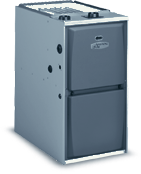
High-Efficiency Heating
Let the experts at Hybrid Heating & Cooling keep you and your family warm this winter with an Armstrong Air gas furnace. We offer a broad selection of high-effeciency products that offer savings, reliablily and comfort. Contact us for a free in-home equipment estimate and ask us about convenient 0% interest financing options with approved credit.
VIEW OUR PRODUCTS


- Most efficient furnace at up to 97% AFUE
- Modulating gas valve
- Variable-speed ECM blower motor
- Quiet combustion technology
- Communicating control enabled
- Lifetime limited heat exchanger warranty
- 10-year limited parts warranty
- ENERGY STARTM most efficient 2013


- Ultra efficiency at up to 95% AFUE
- Single-stage gas valve
- Quiet combustion technology
- Lifetime limited heat exchanger warranty
- 10-year limited parts warranty


- Superior efficiency at up to 96% AFUE
- Two-stage gas valve
- Variable-speed ECM blower motor
- Quiet combustion technology
- Communicating control enabled
- Lifetime limited heat exchanger warranty
- 10-year limited parts warranty
- ENERGY STARTM qualified


- Efficiency at up to 80% AFUE
- Single-stage gas valve
- Standard blower motor
- Lifetime limited heat exchanger warranty
- 10-year limited parts warranty
Getting to Know Your Gas Furnace
90%+ Furnaces
A 90% plus furnace has two heat exchangers (a primary and a secondary) and are commonly called “condensing” furnaces. These furnaces are capable of extracting at least 92% of the heat from combustion and transferring it into your home. The term “90% plus” means just that, the furnace’s efficiency rating is above 90%. For each $1.00 of natural gas that the furnace uses, at least 92% (or $.92) is used to actually heat your home and the remaining 8% (or $.08) is vented to the outside through the sidewall or roof of your home using a PVC plastic pipe.
80% Furnaces
An 80% efficiency furnace has only one (or primary) heat exchanger and extracts at least 80% of the energy from the combustion process and transferring it into your home. Simply stated, for each $1.00 of natural gas or propane that is used by the furnace, at least 80% (or $.80) is actually used to heat your home. The remaining 20% (or $.20) is vented out through your chimney or flue pipe.
Modulating
Modulating gas furnaces are very high efficiency furnaces, usually 95% and higher. These models also use computer technology along with special gas valves to control the burner output. The burner levels on these models operate at varying levels hence the term “modulating”. When the room thermostat calls for heat, the furnace fires and starts operating at a “medium” level. The furnace operates at this level for a short period and as the temperature gets closer to the set point, the furnace “modulates” to the lowest level until the thermostat is satisfied. In cases where the thermostat is set significantly higher than the room temperature or the heat demand is high, the furnace will operate on the highest stage in order to warm the home up as fast as possible.
Two-Stage
Two-stage gas furnaces are available in both 80% and 90% efficiencies. However, two-stage furnaces use a microprocessor along with a two-stage gas valve to control the burners at a high or low rate, depending on the heat demand. When the outside temperatures are moderate, the burners operate at a lower, more efficient rate. If the outside temperatures are very cold, then the furnace will operate at the higher rate in order to keep up with the heating demand.
ECM Variable-Speed Motor
Unlike conventional PSC motors which are designed to run at 1 speed, an ECM variable-speed motor can run at a wide range of speeds to precisely deliver the exact airflow required to heat or cool the home to temperature called for by the thermostat. Typically, an ECM motor will turn on and gradually increase the speed of the fan as more air is called for, and decrease the speed as target temperature is close to being met. Additionally, variable-speed motors are much quieter than conventional motors and improve air circulation which results in reduced temperature swings, greater indoor comfort and significant energy savings.Unlike conventional PSC motors which are designed to run at 1 speed, an ECM variable-speed motor can run at a wide range of speeds to precisely deliver the exact airflow required to heat or cool the home to temperature called for by the thermostat. Typically, an ECM motor will turn on and gradually increase the speed of the fan as more air is called for, and decrease the speed as target temperature is close to being met. Additionally, variable-speed motors are much quieter than conventional motors and improve air circulation which results in reduced temperature swings, greater indoor comfort and significant energy savings.
PSC Motor
A PSC motor is designed to more simply turn on and turn off. The output of a PSC motor is isn’t controllable and it has no intermediate speeds, which means it’s either running at it’s full output or isn’t running at all.
Brands We Trust





